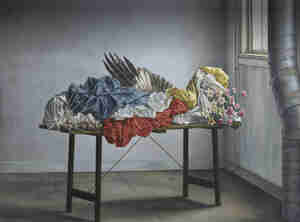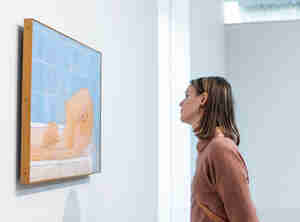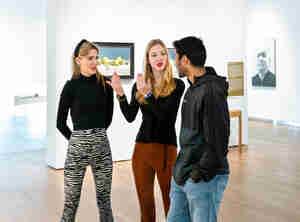- Plan your visit
- See and do
- Collection
- About us

Go back
Pyke Koch
Resting Chimney Sweep, 1936
Pyke Koch’s work is characterized by a certain enigmatic ambiguity. While Koch moved in aristocratic and intellectual-artistic circles, he liked to paint figures from the ‘slum.’ His work frequently alludes to homosexuality and transvestism. Koch was married to Heddy de Geer (1908-1988). Curiously e
...
nough, the women in his paintings often look like transvestites with Koch’s own features. Perhaps he was what might be called a pansexual or perhaps he simply enjoyed sowing confusion. In any case, he revealed little about the content of his work.
The Resting Chimney Sweep is not as colourful as Koch’s flamboyant, androgynous, female figures. Nor does it seem to contain any sexual references: the chimney sweep looks down dreamily with a bemused smile on his face. However, in his hand he holds a blue flower, a symbol of l’amour bleu: gay love. The profession of chimney sweep traditionally had homoerotic connotations and a history of obscene verse. Koch soon removed the flower from the painting but added it again at the request of the owner around 1970.
Text: Myrthe Wesseling, guide and museum host
Artist
Pyke Koch
Title
Resting Chimney Sweep
Year
1936
Technique
Oil on panel
Size
30 x 52 cm (h x w)
Type of object
Painting
Copyright
© Pictoright
This work is protected by copyright. You need permission from the creator or his heir to download, edit, copy or publish it.










